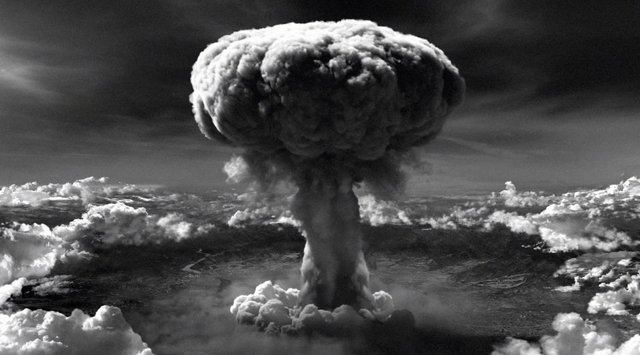Nuclear Fusion vs. Nuclear Fission

The difference between Fusion and Fission
The difference between nuclear fission and nuclear fusion is that with fission, atoms are being split (Figure 18).

When we look at a fusion reaction, the energy is produced due to the high binding energy of helium. This results in a mass deficit: the mass after the reaction is much lower than before the reaction. Einstein taught us that this lost mass is converted into energy. Fusion should theoretically produce energy with atomic nuclei that are lighter than iron-56, from then on it would actually cost energy to fuse two nuclei together. Nuclei that are heavier than iron-56 do produce energy if they are split.
This is the opposite of what happens with nuclei lighter than iron-56. With fission, which only generates energy with heavy nuclei, a highly energetic neutron is fired at the nucleus. This makes the heavy nucleus split into 2 lighter nuclei, both with a higher binding energy than the original heavy nucleus. This higher binding energy again causes a mass deficit, which is converted into the energy the neutrons have after the reaction (Figure 19).

There are numerous reasons why fusion is better than fission. Conventional fission, that of uranium-235, produces about 200 MeV per reaction. This is more than a fusion per reaction, which produces about 17.6 MeV of energy. The thing is, fission uses a lot more mass. Per unit of mass, fusion generates about 4 times as much energy.
Uranium is a naturally occurring element, but to get the uranium-235, it first has to undergo a purification process. The natural occurring uranium contains about 99.3 % of uranium-238, an isotope that is not fit for fission, and only 0.7 % of uranium-235. Uranium is much rarer than deuterium and lithium, so just like fossil fuels, the world will eventually run out of it.
Another problem is that fission causes a chain reaction, and if this isn’t controlled properly it can lead to a nuclear meltdown – like what happened in Chernobyl. A disruption of sorts can also lead to a meltdown; in Fukushima a reactor melted down because of an earthquake. Together with the dangers of radioactive waste produced by fission, it makes a fission reactor very unstable and dangerous.
Despite all these facts nuclear fission isn’t a dead end yet. A lot of reactors will be shut down due to their age by 2020, but there’s a lot of new generation reactors that will be built in their place. This will maintain the horizontal graph of energy production by fission through this century. Now that fission reactors have been researched and innovated, they will be much safer and efficient. This might all seem very good, but there is still absolutely no solution for the radioactive waste it produces. This still makes fusion the better candidate. With nuclear fusion, there’s also no danger of a meltdown of sorts, because a tiny disruption in circumstances will lead to a rapid cooling of the plasma, which holds no danger.
This was part 9 of my thread on nuclear fusion. If you find this stuff interesting, go read the other 8 parts :)
[Photo Source: Larry Kuperman]